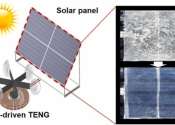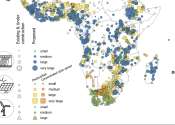Energy development is the ongoing effort to provide sufficient primary energy sources and secondary energy forms to fulfill civilization's needs. It involves both installation of established technologies and research and development to create new energy-related technologies. Major considerations in energy planning include resource depletion, supply production peaks, security of supply, cost, impact on air pollution and water pollution, and whether or not the source is renewable.
Technologically advanced societies have become increasingly dependent on external energy sources for transportation, the production of many manufactured goods, and the delivery of energy services. This energy allows people who can afford the cost to live under otherwise unfavorable climatic conditions through the use of heating, ventilation, and/or air conditioning. Level of use of external energy sources differs across societies, as do the climate, convenience, levels of traffic congestion, pollution, production, and greenhouse gas emissions of each society.
Expanding human populations generally require an increased consumption of and dependence on external energy sources. Research, development and practice of energy efficiency and conservation by the populace allows a degree of mitigation of this dependence. Wise energy use embodies the idea of balancing levels of human comfort and energy consumption by researching and implementing effective and sustainable energy harvesting and utilization measures.









